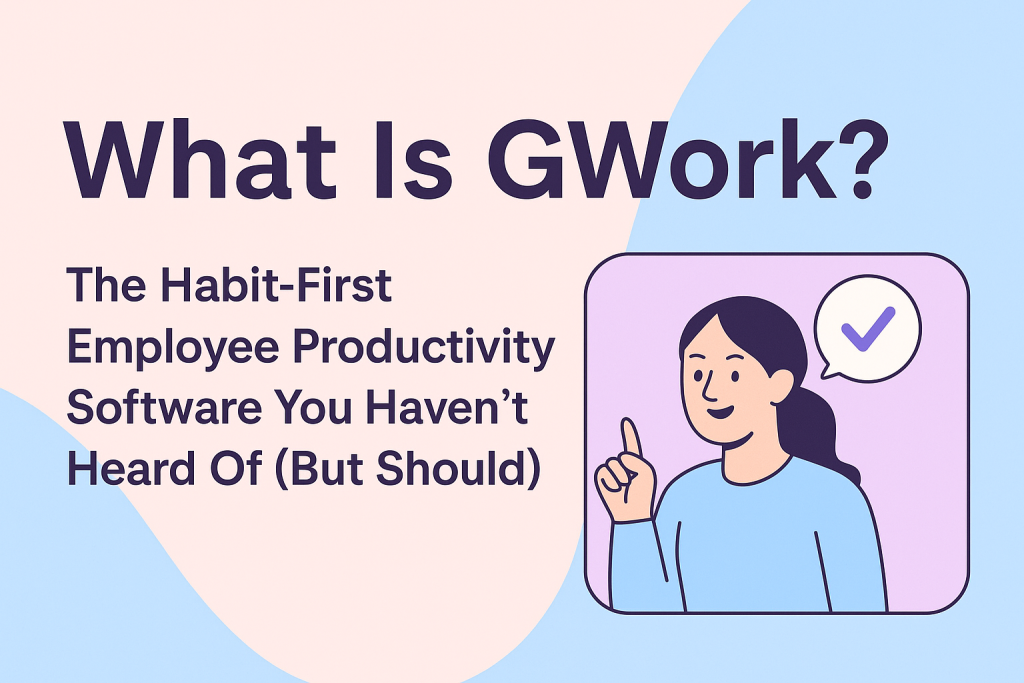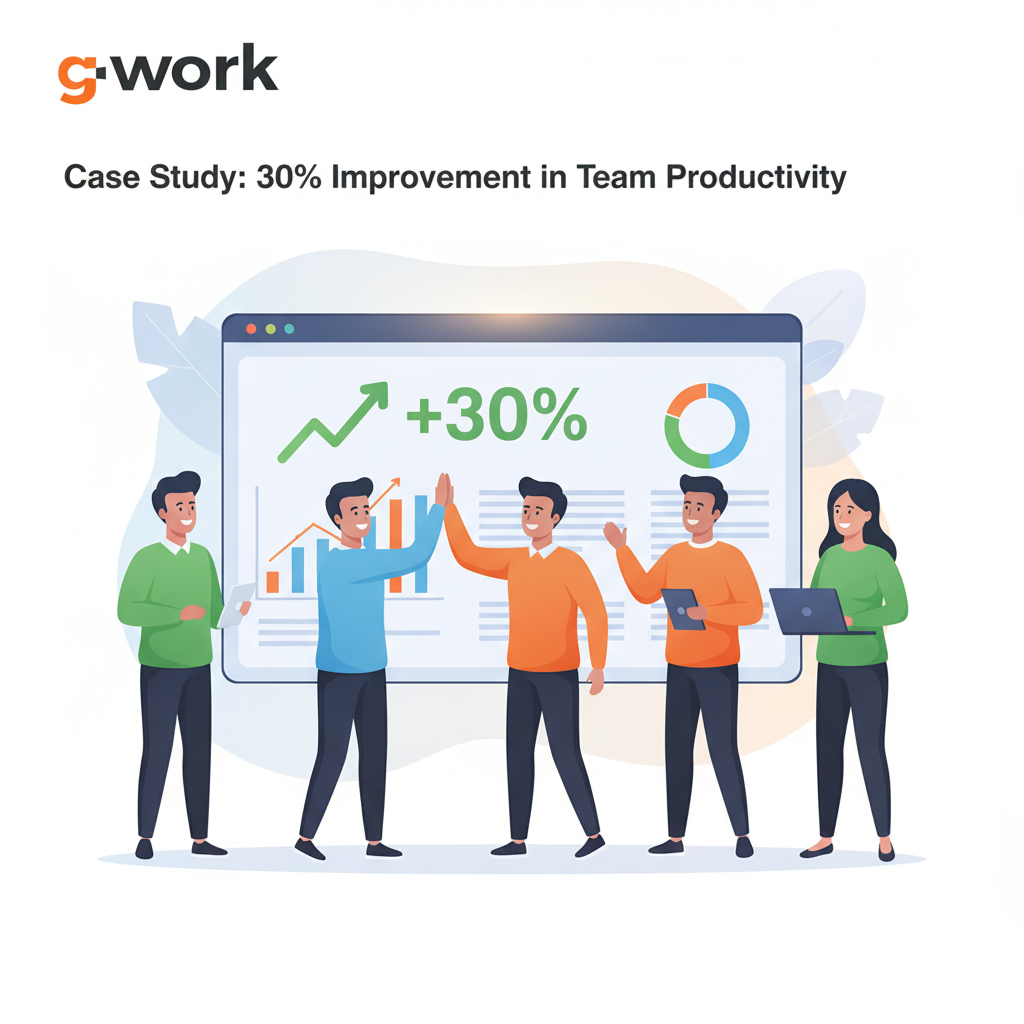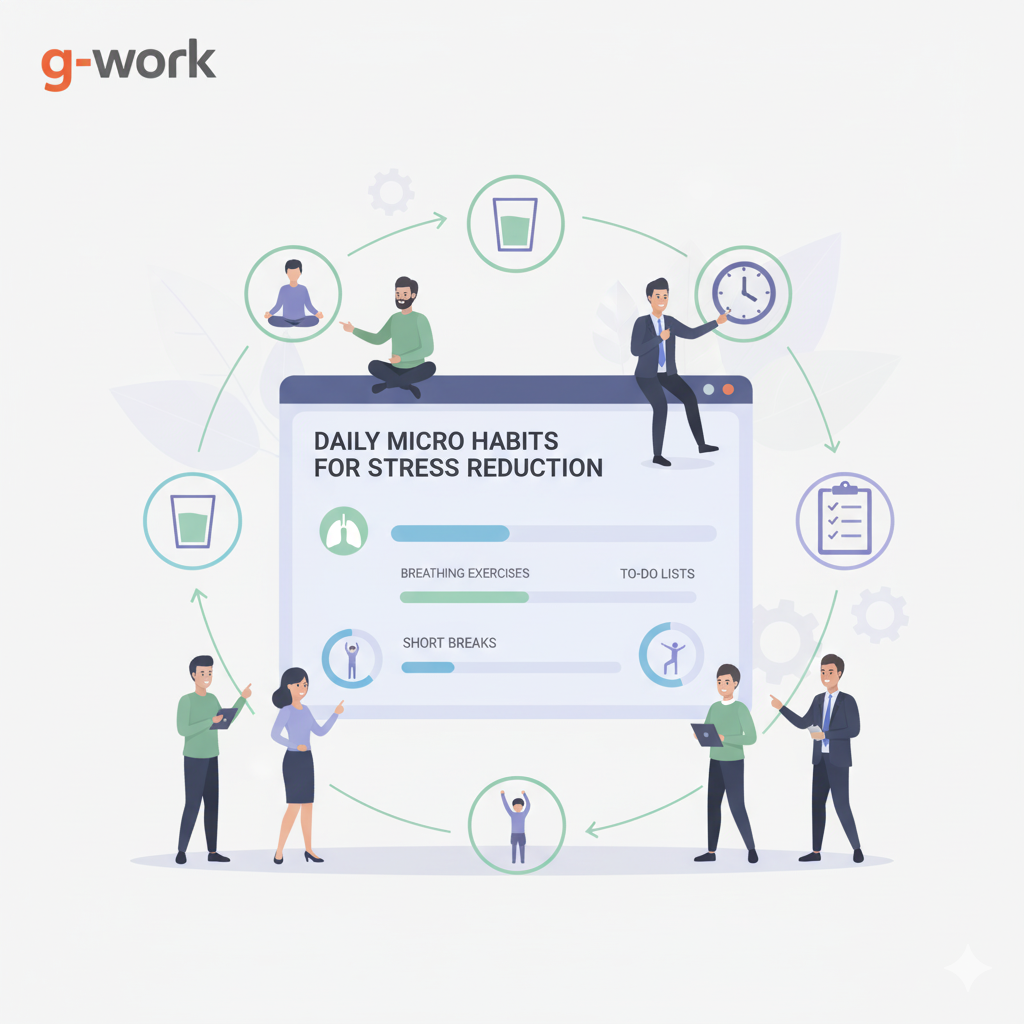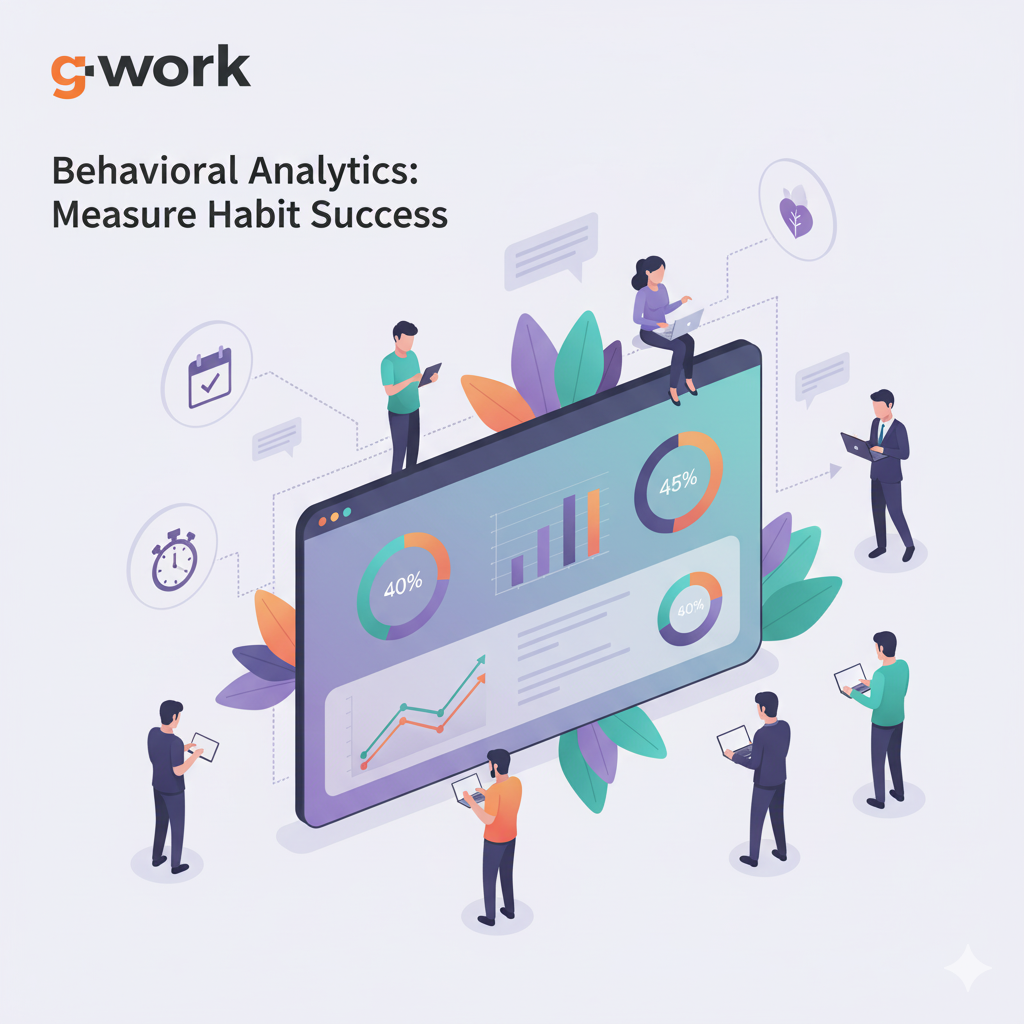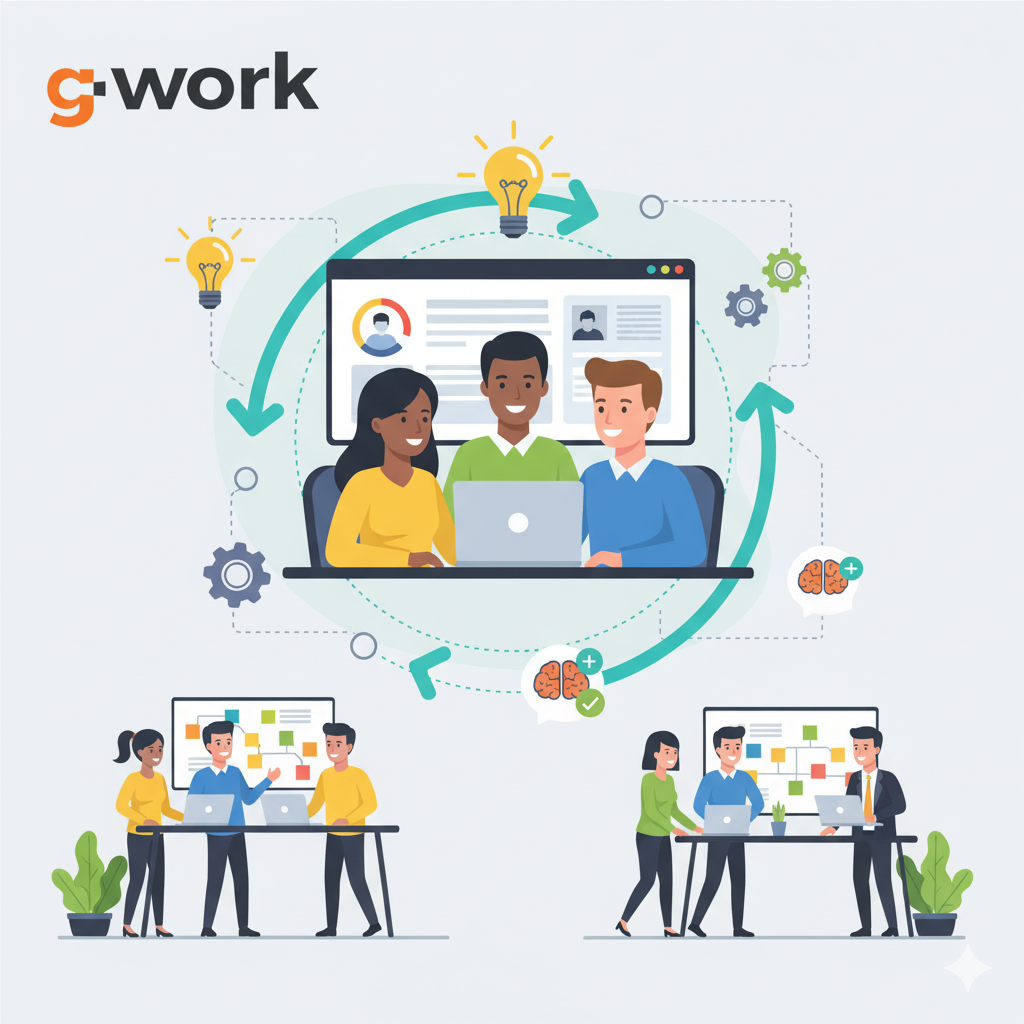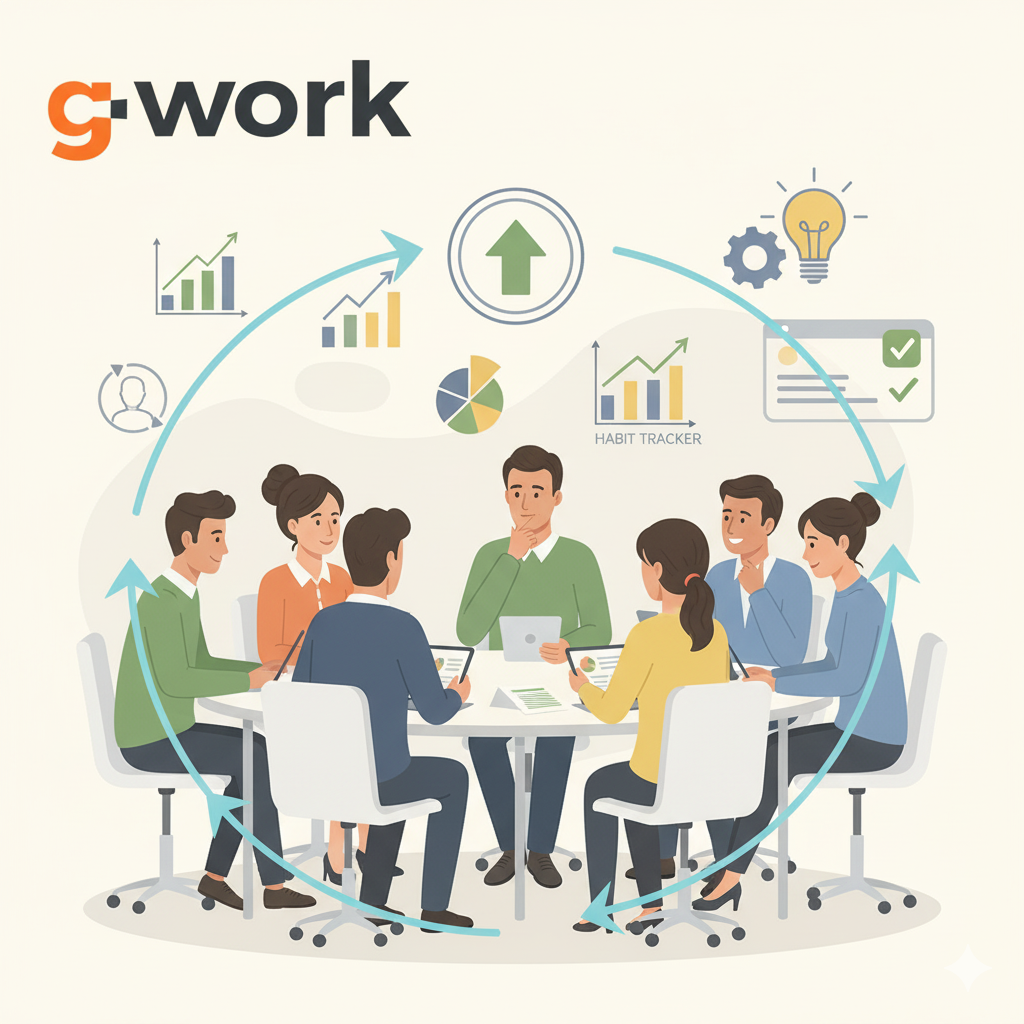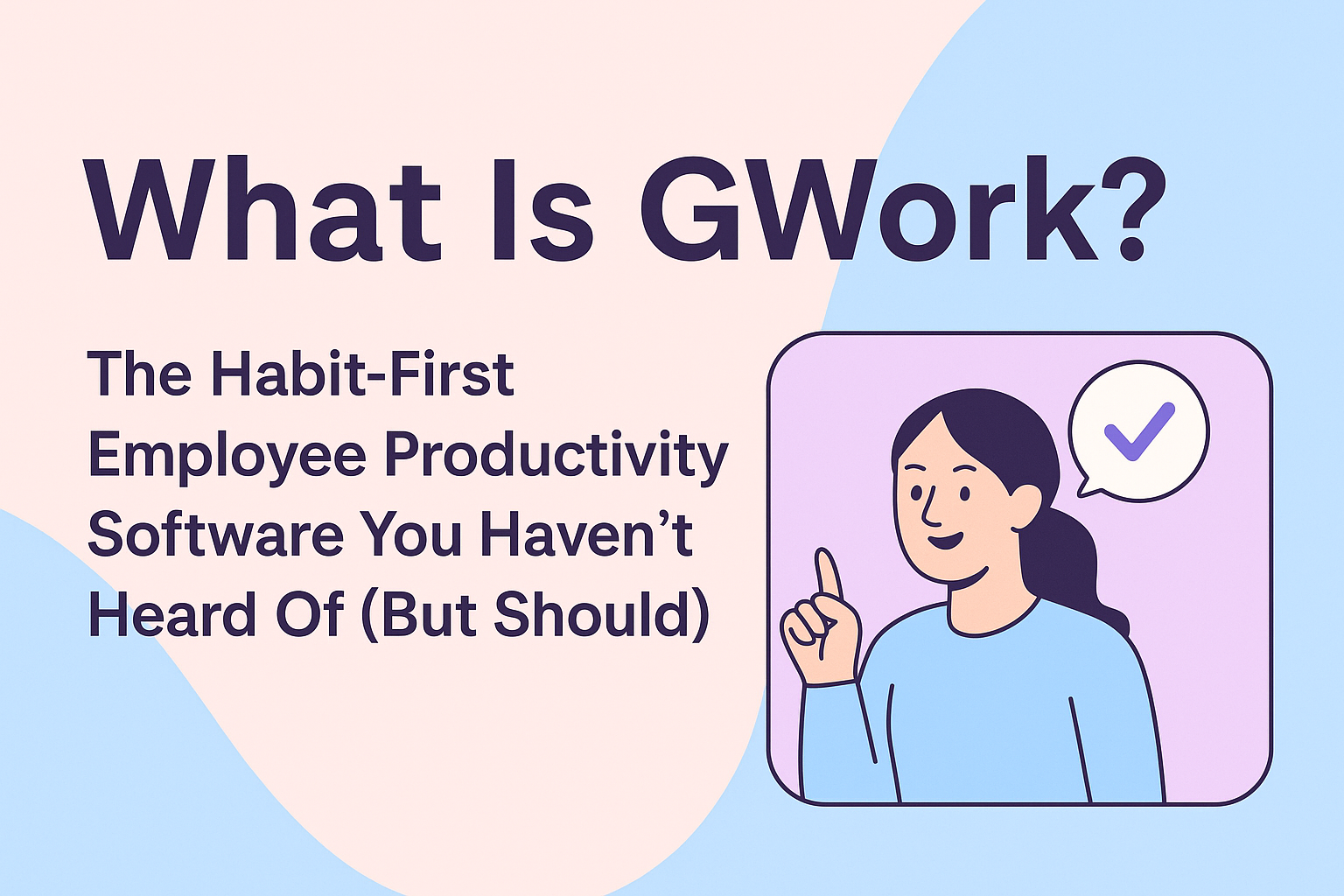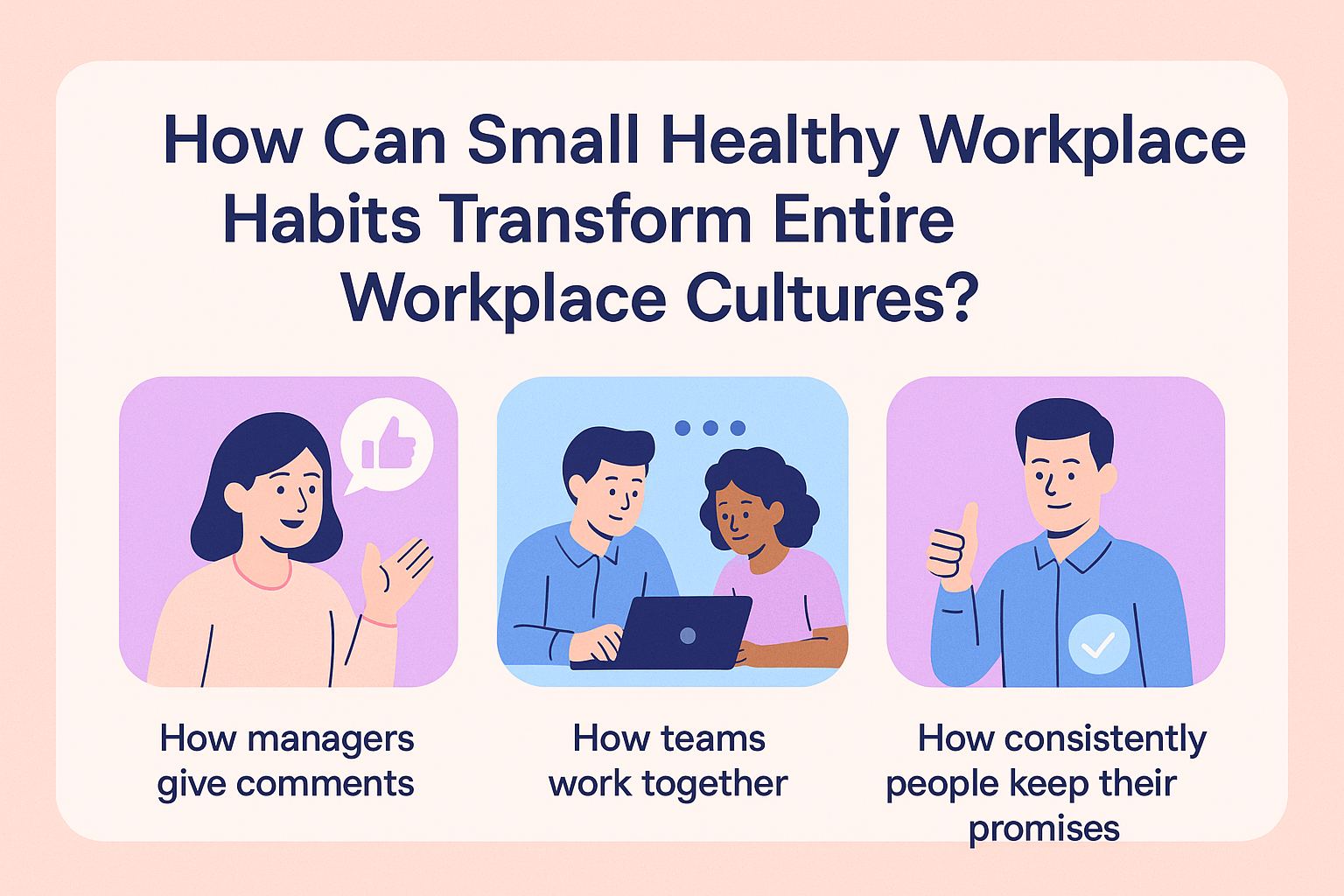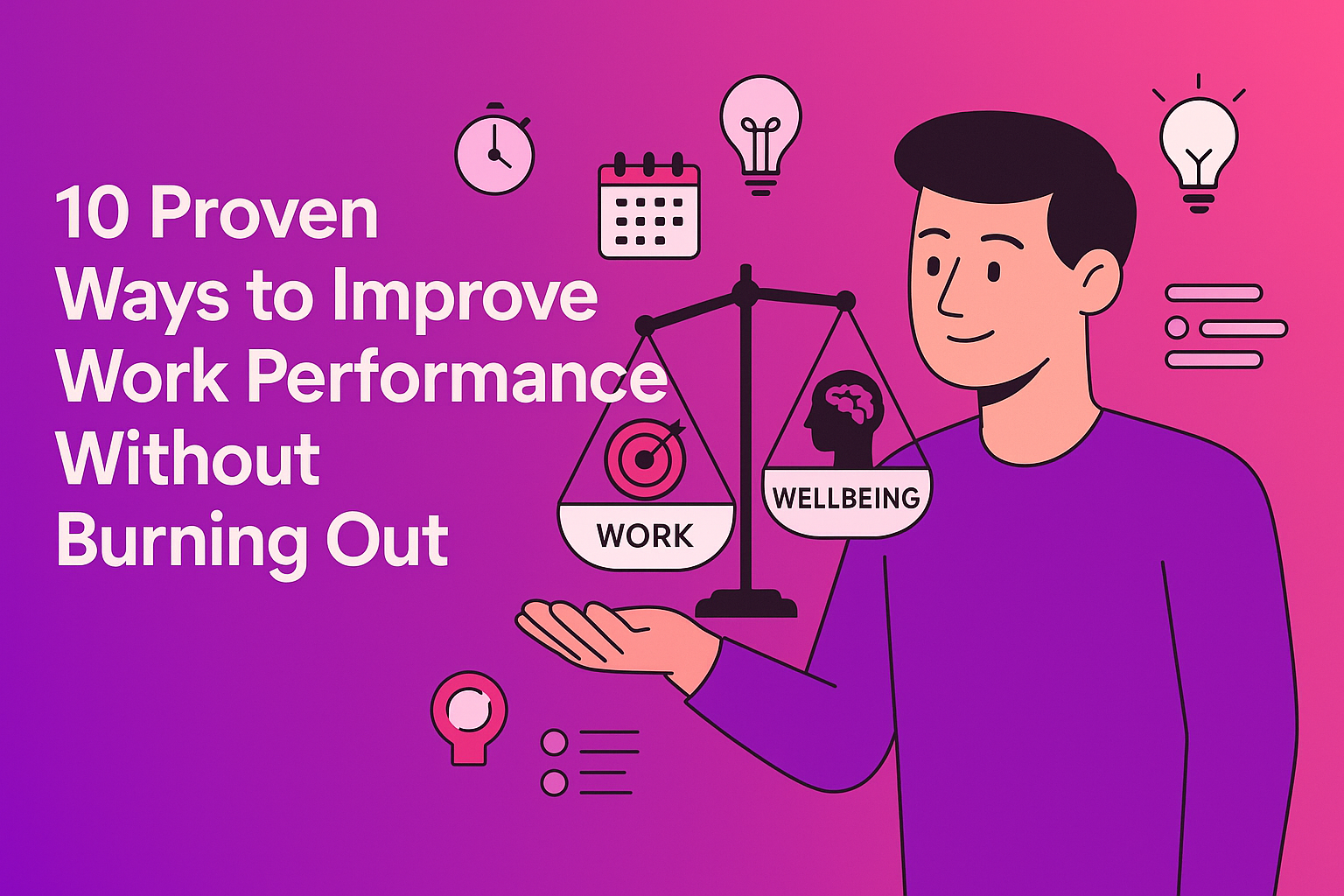What if you could boost employee productivity without adding pressure, micromanaging, or making people feel like they’re being watched?
For many companies today, that might sound impossible. After all, traditional strategies to increase productivity often rely on time-tracking tools, task managers, or motivational speeches. And while some of these approaches help in the short term, most of them miss the deeper problem:
Productivity isn’t just about working harder. It’s about working better, and that starts with behavior.
In this blog, we’ll explore a completely different approach to improving productivity, one rooted in habit science, psychology, and sustainable behavior change.
Why It’s So Hard to Improve Employee Productivity (And Why Most Tools Don’t Help)
Let’s face it: teams today are under more pressure than ever. Deadlines are tighter. Teams are more remote or hybrid. And every hour is being tracked, measured, and analyzed.
Still, many leaders ask: “Why aren’t we seeing better results?”
Here’s the truth: most tools and strategies meant to improve employee productivity fail because they focus on output, not behavior. Instead of helping teams develop sustainable performance habits, they create surveillance systems that often backfire.
1. Time-Tracking Doesn’t Equal Better Work
It’s common to turn to tools that monitor employee productivity—measuring hours worked, keystrokes logged, websites visited.
But what do those numbers actually tell you?
- Just because someone works 8 hours doesn’t mean they did their best work.
- Just because they typed a lot doesn’t mean it was meaningful.
- And just because you track it all doesn’t mean it gets better.
In fact, employee productivity monitoring software can sometimes make things worse:
- Employees feel watched, not trusted.
- Morale drops.
- People work more—but not smarter.
2. Micromanagement Kills Motivation
Another common mistake? Checking in too often. Telling employees how to do everything. Sitting in every meeting.
While some oversight is healthy, micromanagement often leads to burnout. People feel like they can’t think for themselves, and productivity drops. For sustainable results, teams need strategies that improve work performance without burning out.
3. Tracking Tasks ≠ Building Habits
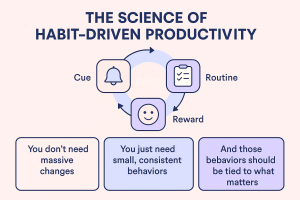
Many companies focus on task management—but forget about the real issue: habits.
If your team isn’t building the right behaviors (like planning before meetings, reflecting after feedback, or checking priorities daily), no amount of task-tracking will help.
CTA: Tired of tracking hours and still not seeing results? Let’s explore a smarter way to increase employee productivity—one behavior at a time.
The Science of Habit-Driven Productivity (And Why It Works Better Than Monitoring)
If time-tracking and micromanagement don’t lead to lasting results, what does?
The answer lies in something simple but powerful: daily habits.
Think about the most successful people or high-performing teams you know. What do they have in common? It’s not that they work 12-hour days or never make mistakes—it’s that they have strong, repeatable behaviors that guide how they work.
These behaviors don’t happen by accident. They’re built—and they’re built through habits. Research shows that understanding the science of habit formation in the workplace is crucial for creating lasting productivity improvements.
What Is a Work Habit, and Why Does It Matter?
A work habit is any small, repeated action that helps (or hurts) your productivity.
Examples include:
- Reviewing priorities every morning before email
- Asking for feedback after client calls
- Ending meetings with action items
- Reflecting on daily progress
- Taking focused breaks every 90 minutes
Now imagine if everyone on your team practiced even 2 or 3 of these consistently.
Over time, the compounding impact would be huge. In fact, small healthy workplace habits can transform entire workplace cultures when implemented systematically across teams.
The Habit Loop: Cue → Routine → Reward
Habits form through a simple pattern:
- Cue – Something triggers the behavior (e.g., end of meeting)
- Routine – The action happens (e.g., writing down action items)
- Reward – There’s a positive result (e.g., clearer follow-ups, less confusion)
This “habit loop” was popularized by experts like James Clear (author of Atomic Habits) and BJ Fogg (creator of the Behavior Model at Stanford).
Their research shows:
🔹 You don’t need massive changes.
🔹 You just need small, consistent behaviors.
🔹 And those behaviors should be tied to what matters.
Why Habits Beat Hustle
Most teams focus on output: how many calls made, how many emails sent, how many tasks ticked off.
But if you build the right habits, those outcomes take care of themselves. Here’s why:
- Habits reduce decision fatigue → employees waste less energy thinking about what to do next.
- Habits improve consistency → productivity becomes reliable, not random.
- Habits support autonomy → employees don’t need to be micromanaged.
In other words, improving employee productivity isn’t about watching people work—it’s about helping them work better automatically.
How Can You Apply This?
Start by asking:
- What are 2–3 small habits that would help your team focus better?
- How can you help those habits become automatic—without forcing them?
This is exactly where GWork comes in. But we’ll get to that in the next section.
CTA: Want your team to work smarter every day—without the pressure? Let’s explore how GWork helps turn good habits into lasting performance.
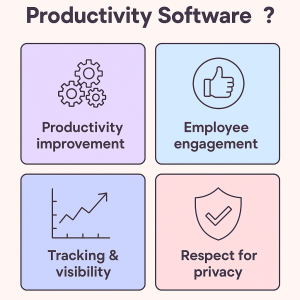
What Is GWork? The Habit-First Employee Productivity Software You Haven’t Heard Of (But Should)
If you’ve ever searched for ways to improve employee productivity, you’ve probably seen software that promises to “monitor work,” “track hours,” or “optimize output.”
But what if there was a smarter way to boost productivity—one that focused on building better habits, not just tracking time?
That’s exactly what GWork does.
GWork in Simple Words
GWork is a modern tool that helps teams become more productive by focusing on how they work, not just what they produce.
It’s not about controlling people. It’s about nudging them toward high-performing behaviors, one habit at a time.
Think of it like this:
- Instead of tracking how long someone worked on a task…
- GWork helps them create the habit of setting clear goals before starting.
- Instead of checking how often they attend meetings…
- GWork builds the habit of ending every meeting with action steps.
These small changes lead to big improvements over time. Rather than forcing people to break the habit of being themselves through willpower alone, GWork provides systematic support for positive behavior change.
Not Another Monitoring Tool
Here’s what GWork is not:
❌ It doesn’t record screens
❌ It doesn’t log keystrokes
❌ It doesn’t create pressure or fear
Instead, GWork helps you:
✅ Identify key behaviors that lead to success
✅ Suggest small daily habits (“Habit Recipes”) for your team
✅ Deliver those habits through tools your team already uses (like Google Calendar, Outlook, Slack, or Teams)
✅ Track how consistently habits are followed—without invading anyone’s privacy
That’s why GWork is a better kind of employee productivity tracker—one that’s respectful, helpful, and actually works.
Why “Habit Recipes” Are So Effective
GWork’s signature feature is its Habit Recipes™—bite-sized behavioral prompts based on psychology and science.
Examples include:
- “At the end of every team call, ask: What’s one thing we could do better next time?”
- “Start your day by reviewing top 3 goals—not your inbox.”
- “After giving feedback, pause and ask: What can I improve in my communication?”
These aren’t tasks—they’re behaviors that drive culture, performance, and clarity.
And because GWork delivers them right into your team’s workflow, they become part of the day without adding friction.
✅ Soft CTA: GWork doesn’t just help your team work harder. It helps them work smarter—one habit at a time.
What Makes GWork a True Employee Productivity Software?
It checks all the right boxes—without the baggage:
| Feature | GWork Delivers |
|---|---|
| Productivity improvement | Yes—by aligning actions with values |
| Employee engagement | Yes—by focusing on behavior, not pressure |
| Tracking & visibility | Yes—via dashboards based on habit data |
| Respect for privacy | Yes—no surveillance or invasive tools |
| Sustainable performance | Yes—through daily habit reinforcement |
So if you’re asking, “How can I increase employee productivity without pushing people too hard?”
—this is your answer.
Step-by-Step: How GWork Helps You Build a High-Performance Team
So far, we’ve talked about the power of habits and why GWork takes a different, smarter approach to productivity.
Now, let’s break down how it actually works—from the moment you sign up to when you start seeing measurable team improvement.
Step 1: Identify the Behaviors That Drive Success
Before you start tracking anything, GWork helps you define the specific behaviors that matter to your team and culture.
Instead of saying “be more productive,” you choose actual habits like:
- Ask for feedback after every sales call
- Plan daily tasks before checking emails
- Hold teammates accountable with check-ins
- Reflect on team wins every Friday
These habits align with your company’s goals, values, and daily routines.
🔹 Why it matters: This isn’t one-size-fits-all productivity. It’s personalized, culture-aligned productivity.
Step 2: Run Assessments to Understand Current Behavior
Next, GWork helps you run quick, behavior-focused assessments—not long surveys or productivity audits.
These may be:
- Self-assessments
- Peer feedback
- 360° check-ins
The focus is on:
- “What are you doing well?”
- “What habits could improve?”
- “What’s holding your team back?”
This stage is crucial for understanding how to improve employee productivity at the root—because it uncovers the small, invisible blockers people don’t usually talk about. It’s similar to the proven strategies outlined in our guide on 10 proven ways to improve work performance without burning out.
🔹 What you get: A clear map of strengths, gaps, and opportunities—for each team member.
Step 3: Activate Personalized Habit Recipes
This is where GWork truly shines.
Using assessment data, the system automatically recommends Habit Recipes™—short, actionable nudges delivered to each employee’s calendar, Slack, or Teams workflow.
Examples:
- “Today: Start your stand-up by asking what slowed you down yesterday.”
- “Reminder: Send a thank-you note to someone who helped you this week.”
- “At 4:30pm: Reflect on your top win from today.”
These habits are:
- Short (less than 5 minutes)
- Easy to follow
- Aligned with goals
- Measured over time
This turns GWork into a lightweight employee productivity tracking software that builds performance from the inside out.
🎯 Why this works: Because GWork respects your time, focuses your attention, and supports lasting behavior change.
Step 4: Track Progress with Habit Dashboards
Here’s where it all comes together.
GWork provides a clean, easy-to-read dashboard showing:
- How consistently employees follow their Habit Recipes
- Which behaviors are improving across teams
- Which ones need more support
- Trends over time (monthly, quarterly, yearly)
It’s not about watching what people do every minute. It’s about seeing how people grow, one behavior at a time.
Why this matters for leadership: You gain true visibility into team performance—without surveillance or overload.
CTA: Want visibility into what really drives your team’s success? GWork tracks habits, not just hours—so you get clarity without crossing privacy lines.
Next, we’ll dive into how GWork incorporates light gamification and why that keeps teams engaged—without creating pressure or fake competition.
How GWork Uses Light Gamification to Keep Habits Engaging (Without Distraction)
Many companies try to motivate employees by turning work into a game.
They introduce leaderboards, badges, or even digital trophies—hoping that a little competition will spark action. Sometimes it works… but often, it feels fake or forced.
That’s why GWork takes a different approach: quiet gamification, based on real psychology—not gimmicks.
Wait, What Is Gamification Anyway?
Gamification means adding game-like elements to non-game environments—like work.
Common examples:
- Points for completed tasks
- Badges for hitting goals
- Leaderboards comparing employee performance
While this can help in small doses, it can also backfire:
- People chase points instead of quality
- Employees compare themselves constantly
- It adds pressure, not progress
That’s why GWork avoids traditional gamification—and uses habit psychology instead.
GWork’s Behavior-First “Gamification” (Without the Noise)
Here’s how GWork keeps employees engaged without overdoing it:
1. Micro-Rewards from Habit Success
Each time an employee completes a habit (like pausing to reflect or planning a day), they get instant psychological feedback—a sense of achievement and progress.
This is a natural dopamine trigger. It motivates consistency over time, even without any badge or leaderboard.
GWork nudges don’t feel like games—but they use the same reward loops that keep habits sticky.
2. Streaks and Momentum
When employees repeat a habit daily or weekly, they start building a streak—visible in their GWork dashboard.
The more streaks they keep alive, the more invested they feel.
This quiet gamification method supports intrinsic motivation:
- People want to keep going because they see progress
- There’s no public pressure—only private achievement
3. Peer Nudges (Without Judgment)
GWork can lightly involve peers in habit cycles—for example, by suggesting collaborative prompts like:
- “Give feedback to a teammate after today’s project huddle”
- “Ask your team to share what went well this week”
These add light social accountability, another core gamification element, without creating embarrassment or comparison.
4. Progress Dashboards Instead of Points
The GWork dashboard shows habit completion, behavior trends, and engagement levels—but it doesn’t “score” employees.
This encourages reflection and learning instead of competition.
Why This Matters
You want your team to build great habits—not feel like they’re playing for gold stars.
GWork gives them the internal motivation to show up, improve, and grow—without the stress of being ranked or judged.
And when people feel supported instead of scored, they actually perform better.
Research shows: Habit-based nudges with subtle rewards lead to higher adoption rates than competitive gamification alone. (BJ Fogg Behavior Model, James Clear on habits)
CTA: Looking for a more human, habit-based approach to boosting employee productivity? GWork combines psychology and structure—without artificial pressure.
GWork vs. Traditional Productivity Tools: What’s the Real Difference?
When most companies set out to improve employee productivity, they usually turn to familiar solutions:
- Time trackers
- Project management platforms
- Employee monitoring software
- KPI dashboards
And while these tools serve a purpose, they don’t always solve the root problem—how people actually work.
So how does GWork compare to them?
Let’s break it down.
Traditional Tools: Focused on Activity
Most conventional platforms aim to:
- Log hours
- Monitor screens
- Count keystrokes
- Track app usage
- Analyze task completion
They give you data about time and tasks, but they don’t answer deeper questions like:
- Is your team actually working on the right things?
- Are they building good habits that lead to better work?
- Is your culture supporting sustainable productivity?
In fact, some of these tools can unintentionally hurt morale—especially when employees feel they’re being watched or judged by metrics that miss the bigger picture.
GWork: Focused on Behavior and Growth
GWork shifts the conversation from “What are you doing right now?” to:
- “How are you growing?”
- “Which habits are supporting your success?”
- “Are you improving week over week?”
It doesn’t record screens. It doesn’t invade privacy. It doesn’t reduce people to numbers.
Instead, it:
- Helps teams build high-value habits
- Tracks behavioral consistency
- Aligns actions with company values
- Supports learning and coaching—not control
Side-by-Side Comparison: GWork vs Other Tools
| Feature/Focus | Traditional Tools | GWork |
|---|---|---|
| 🎯 Focus | Activity + time | Behavior + consistency |
| 👁️ Monitoring style | Screen, mouse, app tracking | None – habit-based, privacy-respecting |
| 🧩 Productivity tracking method | Hours/tasks/keystrokes | Habits, behavior trends, culture alignment |
| 🤖 AI usage | Often basic automation only | AI-powered habit recommendations + nudges |
| 📈 Progress measurement | Task % complete | Habit completion streaks, behavioral insights |
| 👥 Employee experience | Often feels like surveillance | Feels like personal growth support |
| 🧭 Outcome | “Busy” work, tracked work | Meaningful work, repeatable productivity |
Why This Matters for Managers and HR Leaders
If you’re a:
- Team lead trying to increase accountability
- People manager seeking more coaching data
- HR or L&D leader building culture from the inside
- Startup founder creating a focused, distributed team
Then GWork provides something unique:
- Real performance improvement
- Clearer insights without micromanagement
- A system that scales with your team and their values
📌 GWork isn’t just an employee productivity tracker—it’s a behavior-change engine.
✅ Soft CTA: Looking for an alternative to time-tracking tools? GWork gives you what those platforms can’t: visibility into the habits that drive results.
Final Thoughts: Smarter Productivity Starts With Simpler Habits
Improving employee productivity isn’t about doing more.
It’s about doing what matters—more consistently, more intentionally, and more humanely.
Let’s recap what we’ve learned:
- Traditional tools often focus on tasks, hours, or surveillance—but real growth comes from behavior.
- Productivity isn’t a number on a dashboard—it’s a habit-driven pattern of action, focus, and alignment.
- GWork helps you build that pattern—quietly, respectfully, and powerfully—using Habit Recipes™, behavior tracking, and personalized nudges.
It’s not just another employee productivity software. It’s a shift in how teams grow, communicate, and perform—without stress.
With GWork, you don’t need more meetings. You don’t need tighter control.
You just need better habits, made easier.
🎯 Is GWork Right for You?
Let’s be honest:
If you want a quick-fix app to track screens, count keystrokes, or push people harder—GWork isn’t for you.
But…
If you believe:
- Real performance comes from better daily behaviors
- Habits can be guided, reinforced, and tracked
- Growth should feel natural—not forced
- And people thrive when they’re supported—not micromanaged…
Then GWork is exactly what you’re looking for.
Ready to Improve Employee Productivity—One Habit at a Time?
Try GWork today and see how better habits create better performance.
- Set up in minutes
- Integrates with tools your team already uses
- No complex training, no micromanagement
- Just simple nudges that drive real growth
👉 Book Your Free Demo Now → See how GWork can help your team improve, grow, and collaborate—without adding stress.
👋 Even If You’re Not Ready Yet…
You can still start by asking one powerful question in your next team meeting:
“What’s one small habit we could build this week that would make us just 1% better?”
That’s where productivity starts—not with pressure, but with intention.
And when you’re ready to scale those habits across your company, GWork will be ready for you.
Frequently Asked Questions (FAQs)
1. What is the best way to improve employee productivity?
The best way to improve employee productivity is by helping employees build consistent, high-impact habits. Instead of focusing only on time tracking or tasks completed, use behavior-based tools like GWork that encourage daily routines aligned with team goals. Habits like goal-setting, post-meeting reflections, and feedback sharing can lead to long-term performance gains. For comprehensive strategies, check out our guide on 10 proven ways to improve work performance without burning out.
2. How can I boost employee productivity without micromanaging?
You can boost employee productivity without micromanaging by using habit-based systems. Platforms like GWork provide subtle reminders and coaching nudges that help employees improve performance on their own. Managers get visibility through behavior dashboards—without controlling every move or checking every hour.
3. Is there a tool to improve employee productivity through behavior change?
Yes, GWork is a behavior-focused employee productivity software that improves team performance by delivering daily habit prompts. It helps employees build consistent routines without needing invasive monitoring or complicated systems. Learn more about how small healthy workplace habits can transform entire workplace cultures.
4. How does GWork track employee productivity differently than other tools?
GWork tracks productivity through habit completion, not hours logged. It doesn’t monitor screens or time usage. Instead, it uses AI-driven Habit Recipes™ to nudge users toward high-performance behaviors like planning, follow-up, and feedback—then tracks consistency across teams using a respectful, lightweight dashboard. The approach is based on the science of habit formation in the workplace.
5. What are some examples of habits that increase employee productivity?
Some productivity-boosting habits include:
- Setting clear goals at the start of the day
- Reviewing key priorities before meetings
- Reflecting on wins and blockers at the end of the week
- Requesting feedback after project completion
- Sharing small progress updates with team members
These can be delivered through GWork’s calendar or chat integrations.
6. How do I measure employee productivity with habits, not hours?
You can measure productivity by tracking the consistency of high-value habits across your team. GWork allows you to assign specific behaviors, monitor how often they’re followed, and review team-wide behavior trends. This gives insight into cultural alignment, initiative, and growth without needing time-tracking software.
7. Can GWork replace traditional employee monitoring tools?
Yes. GWork replaces the need for screen tracking or micromanagement tools by giving you insight into what actually drives performance—habits. It helps create a trust-based environment while still offering clear data and visibility for managers.
8. Is GWork suitable for remote or hybrid teams?
Absolutely. GWork is designed for distributed teams. Since habits are delivered via integrations like Slack, Google Calendar, and Outlook, employees don’t need to log into separate systems. It works quietly in the background to support focus and consistency in hybrid work environments.
9. How quickly can I start using GWork?
GWork can be set up in minutes. You can start with a small pilot group, select a few Habit Recipes, and begin tracking behavior immediately using the built-in dashboard. There’s no complicated onboarding process.
10. What makes GWork different from other employee productivity tracking software?
GWork focuses on behavior—not surveillance. It respects privacy, avoids screen tracking, and helps employees build the routines that lead to better performance. It’s science-backed, habit-driven, and designed to align with your company’s values. To understand more about the psychological foundations, read about the science of habit formation in the workplace.
